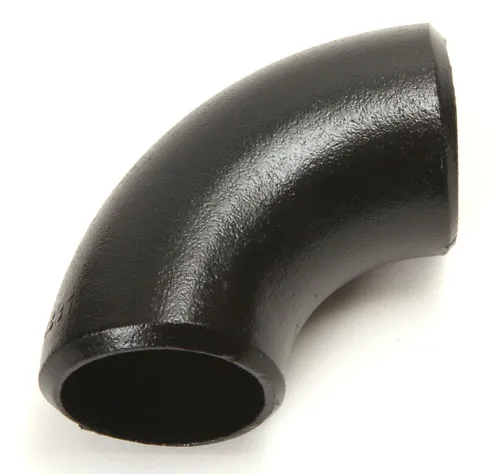-
Cangzhou Yulong Steel Co., Ltd.
-
Phone:
+86 13303177267 -
Email:
admin@ylsteelfittings.com
- English
- Arabic
- Italian
- Spanish
- Portuguese
- German
- kazakh
- Persian
- Greek
- French
- Russian
- Polish
- Thai
- Indonesian
- Vietnamese
- Zulu
- Korean
- Uzbek
- Hindi
- Serbian
- Malay
- Ukrainian
- Gujarati
- Haitian Creole
- hausa
- hawaiian
- Hebrew
- Miao
- Hungarian
- Icelandic
- igbo
- irish
- Japanese
- Javanese
- Kannada
- Khmer
- Rwandese
- Afrikaans
- Albanian
- Amharic
- Armenian
- Azerbaijani
- Basque
- Belarusian
- Bengali
- Bosnian
- Bulgarian
- Catalan
- Cebuano
- China
- China (Taiwan)
- Corsican
- Croatian
- Czech
- Danish
- Esperanto
- Estonian
- Finnish
- Frisian
- Galician
- Georgian
- Kurdish
- Kyrgyz
- Lao
- Latin
- Latvian
- Lithuanian
- Luxembourgish
- Macedonian
- Malgashi
- Malayalam
- Maltese
- Maori
- Marathi
- Mongolian
- Myanmar
- Nepali
- Norwegian
- Norwegian
- Occitan
- Pashto
- Dutch
- Punjabi
- Romanian
- Samoan
- Scottish Gaelic
- Sesotho
- Shona
- Sindhi
- Sinhala
- Slovak
- Slovenian
- Somali
- Sundanese
- Swahili
- Swedish
- Tagalog
- Tajik
- Tamil
- Tatar
- Telugu
- Turkish
- Turkmen
- Urdu
- Uighur
- Welsh
- Bantu
- Yiddish
- Yoruba

Oct . 11, 2024 11:04 Back to list
metal curved pipe
Understanding Metal Curved Pipes Applications, Advantages, and Fabrication
Metal curved pipes play an essential role in numerous industries, providing critical functionality in a variety of applications. Their unique design and properties allow them to serve an array of purposes, ranging from structural support to fluid transport. This article delves into the significance of metal curved pipes, their advantages, and the intricacies of their fabrication.
Applications of Metal Curved Pipes
Metal curved pipes are widely used in several sectors, including construction, automotive, aerospace, oil and gas, and more. In construction, they often serve as structural elements, offering stability and support for buildings and bridges. In the automotive industry, curved pipes are integral to exhaust systems, enhancing the efficiency of emissions control systems. Similarly, in aerospace, they are utilized in the design of various components due to their ability to withstand high pressure and high temperatures.
Moreover, metal curved pipes are crucial in the oil and gas industry. They facilitate the safe and efficient transportation of fluids, adapting to the complex geometries often required in extraction and refining processes. Their ability to withstand harsh environments and resist corrosion makes them particularly valuable in this field.
Advantages of Metal Curved Pipes
One of the primary advantages of metal curved pipes is their intrinsic strength. Metals such as stainless steel, carbon steel, and alloys provide durability and resistance to wear and tear. This durability extends the lifespan of the pipes, making them a cost-effective choice in the long run.
metal curved pipe

Additionally, the curvature of these pipes allows for smoother transitions in fluid flow compared to straight pipes. This feature is particularly important in systems where minimizing pressure drops and turbulence is crucial for operational efficiency. Curved pipes can also accommodate changes in direction more effectively, reducing the need for additional fittings and connections.
Another notable advantage is design flexibility. Metal curved pipes can be fabricated in various diameters, wall thicknesses, and radii to meet specific project requirements. This customization ensures that engineers can create solutions tailored to the unique challenges presented in their applications.
Fabrication of Metal Curved Pipes
The fabrication of metal curved pipes involves several processes, including bending, welding, and finishing. The bending process can be achieved through methods such as rotary draw bending, roll bending, or induction bending. Each technique has its advantages, and the choice often depends on the specific requirements of the project, including the material type, wall thickness, and desired radius.
Post bending, welding may be required to join multiple sections or integrate flanges and fittings. Skilled welders use various techniques, including MIG, TIG, or submerged arc welding, ensuring strong, leak-proof joints. After welding, finishing processes such as sanding, polishing, or coating may be applied to enhance the pipe's surface for aesthetics, corrosion resistance, or both.
Conclusion
In conclusion, metal curved pipes are vital components in many industrial applications due to their strength, flexibility, and efficiency. Their role in facilitating the movement of fluids, supporting structures, and contributing to overall operational efficiency cannot be overstated. As industries continue to evolve and demand more specialized solutions, the importance of metal curved pipes will undoubtedly grow, emphasizing the need for ongoing advancements in their fabrication and application techniques. The future looks bright for metal curved pipes, promising innovative uses and improvements in design and manufacturing processes.
Latest news
-
ANSI 150P SS304 SO FLANGE
NewsFeb.14,2025
-
ASTM A333GR6 STEEL PIPE
NewsJan.20,2025
-
ANSI B16.5 WELDING NECK FLANGE
NewsJan.15,2026
-
ANSI B16.5 SLIP-ON FLANGE
NewsApr.19,2024
-
SABS 1123 FLANGE
NewsJan.15,2025
-
DIN86044 PLATE FLANGE
NewsApr.19,2024
-
DIN2527 BLIND FLANGE
NewsApr.12,2024
-
JIS B2311 Butt-Welding Fittings LR/SR 45°/90° /180°Seamless/Weld
NewsApr.23,2024











